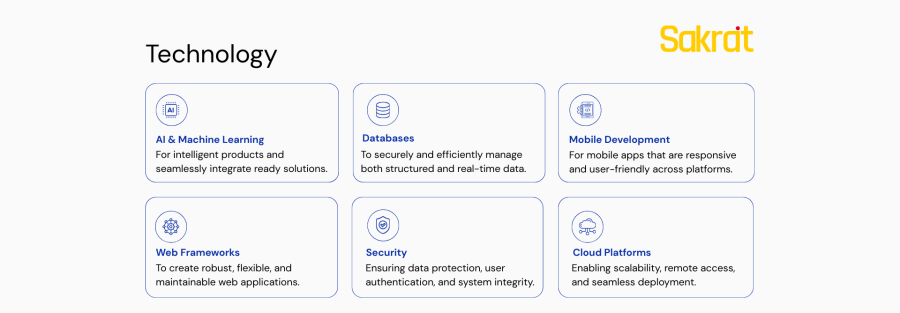Web3 and Metaverse: What Do They Really Mean for Your Business?
For the past few years, Web3 and Metaverse have dominated tech headlines, often presented as a confusing and speculative mix of cryptocurrency, digital apes, and virtual reality headsets. For many business leaders, it’s been easy to dismiss these concepts as niche trends with little relevance to the real world.
That view is rapidly becoming outdated. As we head into 2026, the foundational technologies of Web3 and the immersive experiences of the Metaverse are moving beyond hype and demonstrating tangible business value. These aren’t just far-off futuristic ideas; they are powerful new infrastructures for commerce, community, and data ownership that are solving real-world problems today.
To understand their impact, it’s crucial to separate the two concepts:
- Web3 is the backend revolution. It’s the next evolution of the internet, built on blockchain technology, which shifts control from centralized corporations (like Google and Facebook) to individual users. It’s about decentralization, transparency, and verifiable digital ownership.
- The Metaverse is the frontend revolution. It’s the next evolution of user experience, offering persistent, 3D immersive digital spaces where users can interact with each other and with digital content. It’s about presence, immersion, and experience.
Think of it this way: Web3 is the infrastructure, and the Metaverse is one of the primary user interfaces for that infrastructure. Here’s what that really means for your business.
Web3: From Centralized Platforms to Decentralized Value
Web3’s core innovation is its ability to manage and transfer value securely without a central intermediary like a bank or tech giant. This opens up powerful new business models focused on efficiency, transparency, and direct customer relationships.
Practical Business Application 1: Reinventing Customer Loyalty with NFTs
Traditional loyalty programs are broken. Customers have wallets full of plastic cards and apps offering points with little real-world value. Web3 flips this model on its head with NFT-based loyalty programs.
- How it Works: Instead of points, a customer earns a branded NFT (Non-Fungible Token) that acts as a digital collectible and a key to exclusive perks. This NFT is verifiably owned by the customer and can even be traded, creating a secondary market that adds value to your program.
- Real-World Example: A hotel could issue an NFT to a frequent guest that unlocks permanent room upgrades, access to exclusive events, or special partner discounts. This token becomes a status symbol and a valuable asset, creating a much deeper brand connection than a simple point system.
Practical Business Application 2: Creating Transparent and Resilient Supply Chains
Modern supply chains are notoriously opaque, making it difficult to track goods, verify authenticity, and manage disruptions. Blockchain-based supply chain trackers are solving this.
- How it Works: Each step in a product’s journey from harvest to warehouse to retail shelf is recorded as an immutable transaction on a blockchain. This creates a transparent, auditable, and tamper-proof record that all parties can trust.
- Real-World Example: A pharmaceutical company can use this to guarantee the authenticity of a drug, preventing counterfeits from entering the market. A food company can instantly trace a contaminated batch back to its source, minimizing the impact of a recall. This isn’t just about efficiency; it’s about trust and safety.
Practical Business Application 3: Accessing New Capital with Decentralized Finance (DeFi)
DeFi platforms use smart contracts self-executing code on a blockchain to offer traditional financial services like lending, borrowing, and insurance without the need for a bank.
- How it Works: Businesses can use DeFi protocols to access liquidity, earn yield on corporate treasuries, or even offer their own financial products directly to customers.
- Real-World Example: Instead of navigating complex bank loans, a startup could secure funding by collateralizing digital assets in a DeFi lending pool, with terms enforced automatically by a smart contract. This drastically reduces fees, paperwork, and approval times.
The Metaverse: From Flat Webpages to Immersive Experiences
While still in its early days, the Metaverse is offering businesses new ways to engage customers, train employees, and visualize data. It’s about moving from passive observation to active participation.
- Immersive Commerce: Retailers are experimenting with virtual storefronts where customers can browse products in 3D, try on clothes with virtual avatars, and make purchases.
- Enhanced Training and Collaboration: Companies are using virtual reality to create realistic training simulations for complex tasks, from surgical procedures to operating heavy machinery. This provides a safe and cost-effective way to train employees.
- Virtual Events and Community Hubs: Businesses are hosting product launches, conferences, and community meetups in the Metaverse, allowing them to reach a global audience in a more engaging and interactive way than a standard video call.
What This Means for Your Business Strategy in 2026
You don’t need to launch your own cryptocurrency or build a virtual world from scratch to get started. The smart approach is to identify a specific, high-value problem in your business and explore how these new technologies can solve it.
- Ask yourself: Could my customer loyalty program be more engaging? Is my supply chain as transparent as it should be? Are there inefficiencies in my financial operations?
- Start small: Begin with a pilot project, like creating a limited-edition NFT for your most loyal customers or tracking a single product line on a blockchain.
The transition to Web3 and Metaverse will be a gradual evolution, not an overnight revolution. But the foundational shift is real. Businesses that begin to understand and experiment with these tools today will be the ones best positioned to lead in the decentralized and immersive economy of tomorrow.


